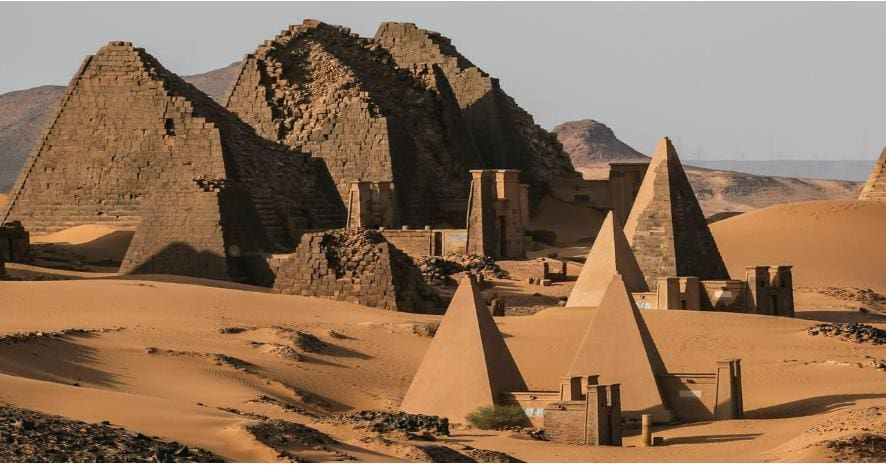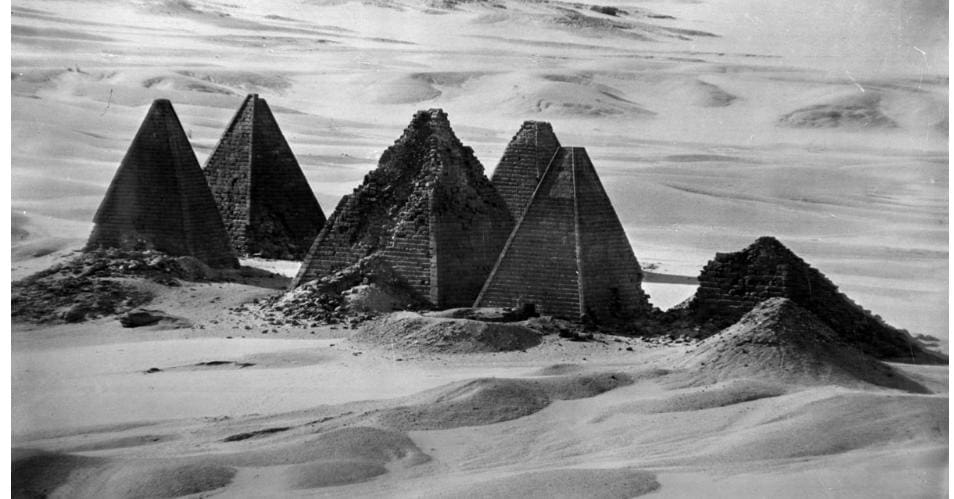The Nubian Pyramids refer to pyramids that were built by the rulers of the ancient Kushite kingdoms. These are located in the area of the Nile Valley known as Nubia, which is in modern-day Sudan.
Nubian Pyramids
- The Nubian pyramids were built by the rulers of the ancient Kushite kingdoms.
- These pyramids are located in modern-day Sudan, in a region called Nubia.
- Nubian pyramids were built over a period of a few hundred years, from around 800 BC to AD 300.
- There are about 255 of these pyramids, which is nearly twice the number of pyramids in Egypt.
- Unlike Egyptian pyramids, which were used as tombs for the pharaohs, Nubian pyramids were used as tombstones for the deceased Kings and Queens.
- The Nubian pyramids are smaller than their Egyptian counterparts, with the average height of the Nubian pyramids being 20-30 meters compared to the Great Pyramid of Giza which is 139 meters tall.
- The Nubian pyramids are recognized for their sharply steep angles.
- Many of the pyramids are in ruins today due to the ravages of time and a 19th-century explorer named Giuseppe Ferlini, who demolished tops of the pyramids in search of treasure.
- The city of Meroë, part of the Nubian region, is home to the largest cluster of these pyramids. It was the capital of the Kingdom of Kush for several centuries.
- The pyramids at Meroë are UNESCO World Heritage Sites, recognized for their cultural significance.
- Unlike Egyptian pyramids, which have a north-south axis, the Nubian pyramids follow an east-west alignment.
- The walls inside the pyramids were decorated with illustrations of the life of the buried King or Queen.
- The entrances to the Nubian pyramids often led to a chapel where offerings could be made to the deceased.
- The first Nubian pyramid was built at the site of el-Kurru, including the tombs of King Kashta and his son Piye, together with Piye’s successors Shabaka, Shabataka, and Tanwetamani.
- Nubian pyramids were typically built with stepped courses of horizontally positioned stone blocks.
- The area with the greatest density of Nubian pyramids is the Necropolis of Meroë where over 40 kings and queens are buried.
- The Italian explorer Giuseppe Ferlini destroyed many of the Nubian pyramids in the 1830s in a search for treasure.
- A unique feature of the Nubian pyramids is a funerary chapel facing east, built at the base of the pyramid.
- The tops of the pyramids used to be decorated with capstones, many of which were elaborate and decorated with sculptures or hieroglyphs. Some of these are now in museums.
- The Nubian pyramids are significantly less known compared to their Egyptian counterparts despite their historical and architectural importance.


